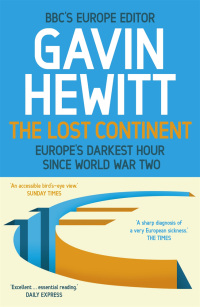Answered step by step
Verified Expert Solution
Question
1 Approved Answer
please show the work so that I actually can understand how to do it myself. Just having the answers doesn't completely help. thanks Part 1
please show the work so that I actually can understand how to do it myself. Just having the answers doesn't completely help. thanks



Part 1 of the assignment requires you to determine the cost of a unit of coffee (Mona Loa and Malaysian) using the traditional overhead allocation method. A unit of coffee is a one pound bag. The unit cost will include direct materials, direct labor, and manufacturing overhead (as determined using the predetermined overhead rate). You NEED to use Excel formulas whenever possible. Basically, the only time you will not use formulas is when you enter given information. Part 2 of the assignment requires you to determine the cost of a unit of coffee (Mona Loa and Malaysian) using the activity-based costing method. As with the traditional method, you will need to show direct materials, direct labor and manufacturing overhead (as determined using ABC), Once again, use formulas wherever you can Part 2A is a comparison of both methods. Link the numbers to Parts 1 and 2 whenever possible. Show a side-by-side comparison of unit product costs calculated under each method (show the unit product cost of each type of coffee using both traditional and ABC costing). Unit product costs include direct materials, direct labor and manufacturing overhead costs on a per unit basis. Further, determine the changes in the profit margins for each bag of coffee under both methods (the sales price mark up % is given below). How much was the company losing per bag of the Malaysian coffee under the Traditional Method? Remember to use formulas. Collo Bean, Inc. (CBI), is a processor and distributor of a variety of blends of coffee. The company buys colToe beans from around the world and roasts, blends, and packages them for resale. CBI currently has 40 dillerent coflocs that it sells to gourmet shops in one-pound bags. The major cost of the coffee is raw materials. However, the company's predominantly automated roasting, blending, and packing process requires a substantial amount of manufacturing overhead. The company uses relatively little direct labor. Some of CBI's collees are very popular and sell in large volumes, while a few of the newer blends have very low volumes. CBI prices ils coffee al manufacturing cost plus a markup of 30%. IT CBI's prices for ccrlain collocs are significantly higher than market, adjustments are made to bring CBI's prices more into alignment with the market because customers are somewhal price conscious. l'or the coming year, CBI's budget includes estimated manufacturing overhead cost of $4,500,000. CBI assigns manufacturing overhead to products on the basis of direct labor. hours. The expected direct labor cost totals 5600,000, which represents 80,000 hours of direct labor time. Based on the sales budget and expected raw materials costs, purchase and use $6,000,000 of raw materials (mostly coffee beans) during the year. The expected costs for direct materials and direct labor for one-pound bags of two of the company's coffee products appear below. Mona Loa Malaysian Dirocl malcrials $ 4.20 S 3.20 Dirocl labor (0.05 hours per bag) $ 0.30 S 0.30 (note that it takes 0.05 DL.Ils to make one bag of coffee you'll need this to apply MOI using the Traditional Method) CBI's controller believes that the company's traditional costing system may be providing misleading cost information. To determine whether or not this is correct, the controller has prepared an analysis of the year's expected manufacturing overhead costs, as shown in the Collowing table: Expected Activily Expected Activity Cost for the Activity Cost Pool Measure for the Year Year misleading cost information. 10 delerinine whether or noi this is correct, the controller has prepared an analysis of the year's expected manufacturing overhead costs, as shown in the following table: Expected Activity Expected Activity Cost for the Activity Cost Pool Measure for the Year Year Purchasing 3,000 orders S 600,000 Material handling 2,500 setups 1,120,000 Quality control 1,000 batches 160,000 Purchase orders Number of setups Number of batches Roasting hours Blending hours kaging hours Roasting 120,000, roasting 1,200,000 Blending hours 80.000,01 blending "hours 21.00 packaging 1,000,000 Packaging Packaging 21,000 hours 420,000 Total manufacturing overhead cost S 4,500,000 Data regarding the expected production of Mona Loa and Malaysian coffee are presented below. Mona Loa Malaysian 1:xpected sales 70.000 pounds 1,500 pounds Data regarding the expected activities used by Mona Loa and Malaysian coffees are presented below. Mona Loa Malaysian Batches Setups Purchase order size Roasting time Blending time Packaging time 10 batches 30 setups 5 orders 700 hours 350 hours 70 hours 4 batches 12 setups 4 orders 15 hours 7.5 hours 1.5 hours
Step by Step Solution
There are 3 Steps involved in it
Step: 1

Get Instant Access to Expert-Tailored Solutions
See step-by-step solutions with expert insights and AI powered tools for academic success
Step: 2

Step: 3

Ace Your Homework with AI
Get the answers you need in no time with our AI-driven, step-by-step assistance
Get Started


